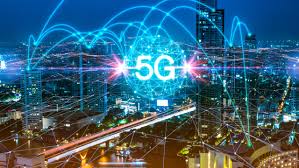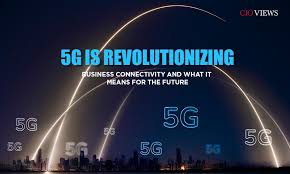
The rollout of 5G technology is reshaping how we connect, communicate, and interact with the digital world. By 2025, 5G networks have moved from experimental phases to widespread adoption, transforming industries, powering smart cities, and enabling innovations that were once the stuff of science fiction.
So, how exactly is 5G changing connectivity? What does this new wireless generation bring to the table? Let’s explore the transformative impact of 5G and how it’s revolutionizing our connected lives.
1. What Is 5G?
5G, or fifth-generation wireless technology, is the latest standard for mobile networks, offering:
- Ultra-fast speeds (up to 100 times faster than 4G)
- Ultra-low latency (near-instantaneous response times)
- Massive device connectivity (supporting millions of devices per square kilometer)
These improvements enable seamless streaming, real-time communication, and expansive Internet of Things (IoT) deployments.
2. Enhanced Mobile Experiences
For consumers, 5G means:
- Buffer-free 4K/8K video streaming and immersive AR/VR experiences on mobile devices.
- Instant downloads and uploads, making remote work and online gaming smoother.
- Improved voice and video call quality with less lag or dropouts.
The everyday digital experience becomes faster, richer, and more reliable.
3. Powering the Internet of Things (IoT)
5G’s ability to connect vast numbers of devices is unlocking the full potential of IoT:
- Smart homes with connected appliances, security systems, and energy management.
- Smart cities deploying sensors for traffic control, pollution monitoring, and public safety.
- Industrial IoT optimizing manufacturing, supply chains, and predictive maintenance.
This connectivity creates more efficient, responsive, and sustainable systems.
4. Transforming Industries
5G is a catalyst for digital transformation across sectors:
- Healthcare: Remote surgeries, real-time patient monitoring, and telemedicine become more feasible.
- Transportation: Connected and autonomous vehicles communicate instantly with infrastructure and each other.
- Agriculture: Precision farming uses 5G-connected drones and sensors to boost crop yields and reduce resource use.
- Entertainment: Cloud gaming and live virtual events reach new heights of immersion and interactivity.
Businesses gain agility and innovation powered by fast, reliable networks.
5. Enabling New Technologies
The ultra-low latency and high bandwidth of 5G are critical for emerging technologies:
- Augmented Reality (AR) and Virtual Reality (VR) experiences without lag.
- Artificial Intelligence (AI) applications that require real-time data processing.
- Edge computing, where data is processed closer to its source, reducing delays.
Together, these technologies promise smarter cities, enhanced education, and next-level entertainment.
6. Challenges and Considerations
While 5G brings many benefits, challenges remain:
- Building infrastructure requires significant investment, especially in rural or remote areas.
- Ensuring cybersecurity as more devices connect and data flows intensify.
- Addressing concerns about electromagnetic radiation and environmental impact.
- Managing spectrum allocation fairly among providers and countries.
Ongoing collaboration among governments, companies, and communities is key to overcoming these hurdles.
Final Thoughts
The 5G rollout is more than just faster internet—it’s a foundational technology enabling a connected, intelligent world. From transforming daily digital experiences to powering entire industries, 5G connectivity is shaping the future of communication and innovation.
As deployment continues and adoption grows, 5G promises to unlock new possibilities that will change how we live, work, and play—making the connected world smarter, faster, and more inclusive than ever before.
